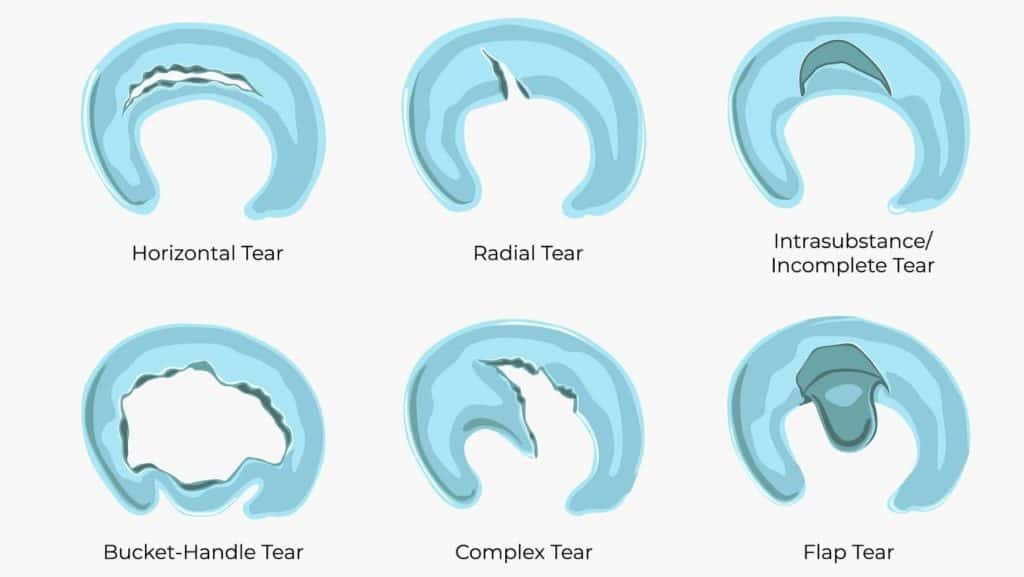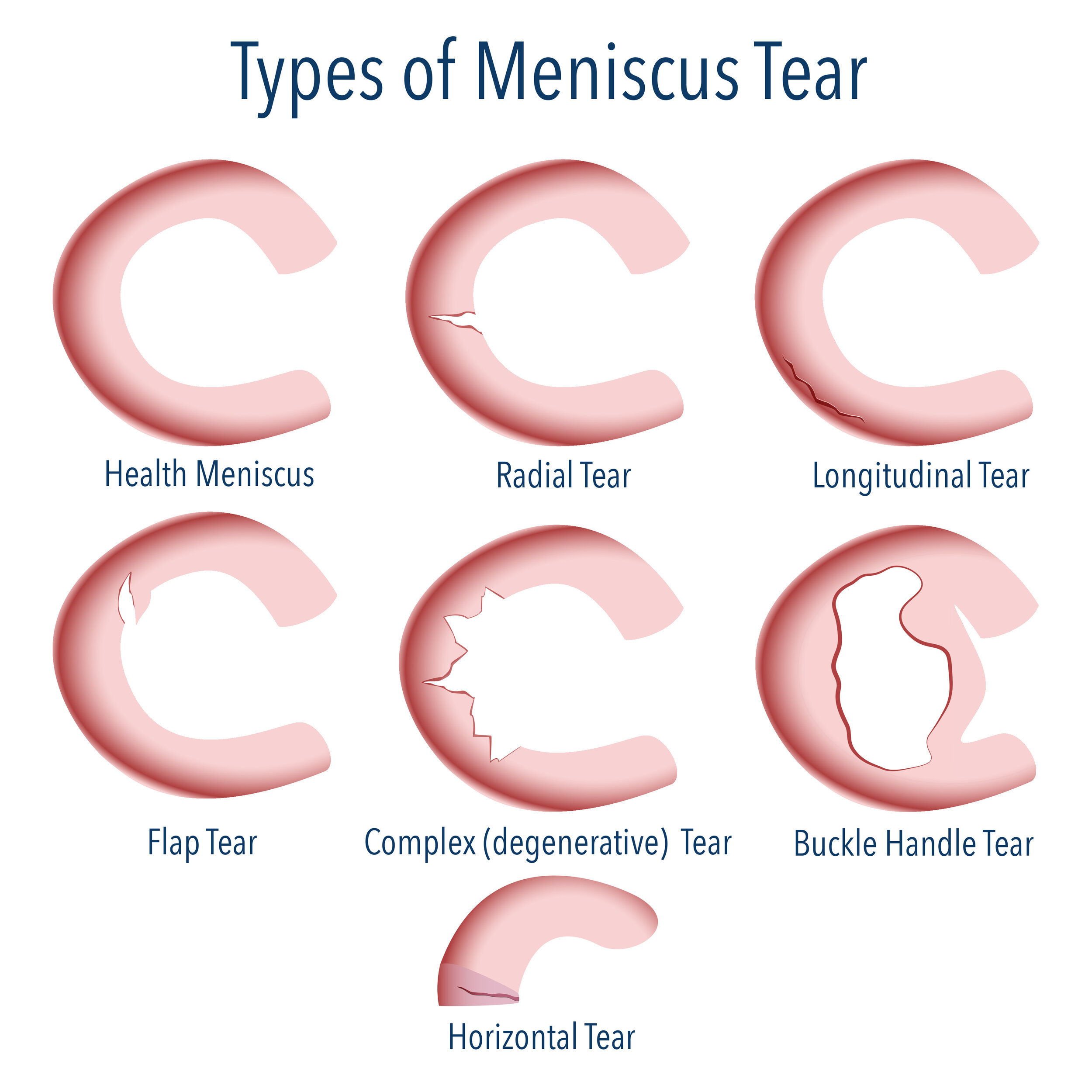Anatomy and Function of the Meniscus

The meniscus is a C-shaped piece of cartilage that acts as a shock absorber and stabilizer in the knee joint. It sits between the femur (thigh bone) and the tibia (shin bone), playing a crucial role in distributing weight and facilitating smooth joint movement.
Location and Structure
Each knee joint has two menisci: the medial meniscus, located on the inner side of the knee, and the lateral meniscus, located on the outer side. They are composed of fibrocartilage, a tough, rubbery tissue that can withstand significant pressure. The menisci are not directly connected to the bones, but they are attached to the joint capsule and ligaments, providing stability and cushioning.
Roles of the Medial and Lateral Menisci
- Weight Distribution: The menisci distribute the weight of the body evenly across the knee joint, reducing the stress on the articular cartilage (the smooth layer covering the bones). This helps to prevent wear and tear on the joint surfaces.
- Joint Stability: The menisci help to stabilize the knee joint by limiting its range of motion and preventing excessive movement. They also act as a buffer between the bones, preventing them from rubbing together.
- Lubrication: The menisci help to lubricate the knee joint by trapping synovial fluid, a lubricating fluid that reduces friction between the bones. This allows for smooth and effortless movement.
Blood Supply to the Meniscus
The meniscus has a limited blood supply, with a distinct difference between the inner and outer zones:
- Outer Zone: The outer zone, also known as the red zone, receives blood directly from the surrounding tissues. This area has a better blood supply and is more likely to heal after injury.
- Inner Zone: The inner zone, also known as the white zone, lacks a direct blood supply and relies on diffusion from the surrounding tissues. This area is less likely to heal after injury, making it more prone to long-term damage.
Types and Causes of Meniscus Tears

The meniscus, a C-shaped piece of cartilage in the knee, acts as a shock absorber and helps distribute weight evenly. Tears in the meniscus can occur due to various factors, including sports injuries, degenerative changes, and trauma. Understanding the different types of tears and their causes is crucial for proper diagnosis and treatment.
Types of Meniscus Tears
The classification of meniscus tears is based on their location, shape, and severity.
- Horizontal Tears: These tears run horizontally across the meniscus, often occurring in the outer portion. They are typically less severe than vertical tears.
- Vertical Tears: These tears run vertically through the meniscus, and can be further categorized into different types:
- Radial Tears: These tears radiate from the inner or outer edge of the meniscus.
- Transverse Tears: These tears run across the width of the meniscus.
- Oblique Tears: These tears run at an angle through the meniscus.
- Complex Tears: These tears involve a combination of different types of tears.
- Flap Tears: These tears involve a portion of the meniscus that has been torn free and is now flapping around.
- Degenerative Tears: These tears occur due to wear and tear on the meniscus over time, often associated with aging and osteoarthritis.
Causes of Meniscus Tears
Meniscus tears can occur due to a variety of factors, including:
- Sports Injuries: Sudden twisting or pivoting movements, particularly during activities like basketball, football, and skiing, can cause meniscus tears.
- Degenerative Changes: Over time, the meniscus can become thinner and weaker, making it more susceptible to tears, especially in individuals with osteoarthritis.
- Trauma: A direct blow to the knee, such as a fall or a car accident, can also cause a meniscus tear.
Risk Factors for Meniscus Tears
Certain factors can increase the risk of developing a meniscus tear:
- Age: The risk of meniscus tears increases with age, as the meniscus becomes more prone to degeneration.
- Activity Level: Individuals who participate in high-impact sports or engage in strenuous physical activities are at increased risk of meniscus tears.
- Previous Knee Injuries: Individuals who have previously sustained a knee injury, such as a ligament tear or a previous meniscus tear, are at greater risk of developing another meniscus tear.
Symptoms and Diagnosis of Meniscus Tears

A meniscus tear can cause a variety of symptoms, depending on the location and severity of the tear. It’s important to understand these symptoms and the diagnostic procedures used to identify a meniscus tear. This knowledge can help you seek appropriate medical attention and understand your treatment options.
Common Symptoms of a Meniscus Tear
The symptoms of a meniscus tear can vary depending on the severity and location of the tear. Common symptoms include:
- Pain: Pain is often the first symptom of a meniscus tear. It may be sharp and sudden, or it may be a dull ache that worsens with activity. The pain is usually located in the knee joint, and it may radiate down the leg.
- Swelling: Swelling in the knee joint is another common symptom of a meniscus tear. The swelling may be mild or severe, and it may develop immediately after the injury or over a few days.
- Locking: A meniscus tear can cause the knee joint to lock, making it difficult to straighten or bend the leg. This is often caused by a piece of torn meniscus getting caught in the joint.
- Instability: A meniscus tear can also cause instability in the knee joint, making it feel like the knee is going to give way. This is because the meniscus helps to stabilize the knee joint.
- Stiffness: You may experience stiffness in your knee, particularly in the morning or after periods of inactivity.
- Clicking or Popping: Some people with a meniscus tear may hear a clicking or popping sound in their knee joint, especially when moving it.
Diagnostic Procedures for Meniscus Tears
Diagnosing a meniscus tear typically involves a combination of physical examination and imaging tests:
- Physical Examination: A physical examination will help your doctor assess your knee’s range of motion, stability, and tenderness. They will also ask about your symptoms and medical history.
- Imaging Tests:
- MRI (Magnetic Resonance Imaging): An MRI scan is the most accurate imaging test for diagnosing a meniscus tear. It provides detailed images of the soft tissues in the knee joint, allowing your doctor to see the location and severity of the tear.
- X-ray: While X-rays are primarily used to detect bone injuries, they can sometimes help rule out other conditions that may mimic a meniscus tear. X-rays may also show signs of arthritis or other joint damage.
- Arthroscopy: Arthroscopy is a minimally invasive surgical procedure that allows your doctor to visualize the inside of your knee joint. It is often used to confirm the diagnosis of a meniscus tear and to repair or remove the torn tissue.
Differences in Symptoms and Diagnosis Based on Location and Severity
The symptoms and diagnosis of a meniscus tear can vary depending on the location and severity of the tear:
- Location: The meniscus is divided into two parts: the medial meniscus (inner side of the knee) and the lateral meniscus (outer side of the knee). Tears on the medial meniscus are more common than tears on the lateral meniscus.
- Medial Meniscus Tears: These tears are often associated with symptoms like pain, swelling, and locking of the knee. They may also cause a feeling of instability.
- Lateral Meniscus Tears: Tears in the lateral meniscus are less common and may cause similar symptoms, but they are often less severe.
- Severity: The severity of a meniscus tear can also affect the symptoms and diagnosis.
- Partial Tears: These tears only involve a portion of the meniscus. They may cause mild pain and swelling, and they may not always require surgery.
- Complete Tears: These tears involve the entire thickness of the meniscus. They are more likely to cause severe pain, swelling, locking, and instability. They often require surgery to repair or remove the torn tissue.
A meniscus tear is a common knee injury that can occur due to sudden twisting or impact. The meniscus acts as a shock absorber and helps stabilize the knee joint. Depending on the severity of the tear, recovery can vary.
For guidance on the healing process and rehabilitation strategies, consult a comprehensive guide on meniscus tear recovery. Understanding the recovery process can empower individuals to effectively manage their injury and return to their desired activity levels.
A meniscus tear is a common knee injury, often occurring during sports or activities involving twisting or pivoting motions. Understanding the anatomy and mechanics of the meniscus is crucial for effective treatment. A recent example of a high-profile meniscus tear involves jj mcarthy injury , which highlights the importance of proper rehabilitation and recovery strategies for athletes.
While the severity of meniscus tears can vary, timely diagnosis and treatment are essential for optimal outcomes and a return to desired activity levels.
